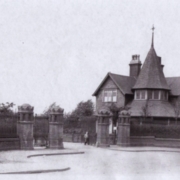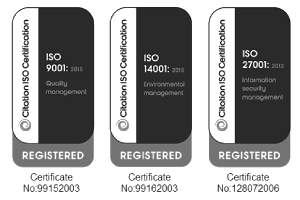Growing roots: Sandwell Metropolitan Borough Council on their latest Heritage Lottery Fund award
Sandwell Council sits just outside of Birmingham and is one of the four Black Country Boroughs. Around 24% of it is made up of green space and as such, it costs the council a lot of money each year to maintain to a high standard. With potentially more budget cuts to come, the council recognised that it was necessary to revitalise their parks now so that they would be able to utilise them for income generation in the coming years, however they would first require money for renovation works.
This is where the Heritage Lottery Fund (HLF) comes in; the council has been awarded 5 grants to date for use in redeveloping Sandwell’s parks. The most recent of these parks is West Smethwick, which is currently going through the first round of the award. For this project, the council has been given £337,300 for round one, which they must use to create detailed plans for the park’s regeneration work, with a further £4.5 million of HLF money earmarked for round two, the actual improvement works, which can begin once the plans have been finalised and approved.
As recipients of a Heritage Lottery Award, Sandwell Council are required to offer match funding for each lottery award they receive. They’ve produced this money for round one from a number of different sources, including the use of volunteer work and section 106 planning gain. For round two, they are selling an old redundant depot next to the park that was once used as a nursery. This land will be sold for housing development and the capital receipt will be used as match funding.
The plans for West Smethwick Park are well underway, overseen by Sandwell’s Development Manager of Green Spaces, David Brown. Many of the ideas the development team are using revolve around restoring the park to its former glory, rather than redesigning it entirely. The park was originally created by James Chance in 1895, who owned a large glassworks nearby. These glassworks provided the large windows for the Crystal Palace in London, as well as glass for the tubes and screen of the first television. Due to these historical roots, Sandwell Council want to restore the historical features, as well as restoring the park’s infrastructure and its large lake. Alongside these works, there are plans to construct a new central pavilion and interpretation centre for public use. Ultimately, the idea is to reinforce the park as a central hub of activity for the local community.
The extra money from the HLF has already helped to achieve this aim in some ways; not only has the money had obvious financial benefits, it has also helped to excite and motivate the local community to get involved with the project. As a result, the development team have been able to make a great start on the historical research and restoration planning that will significantly aid the project.
David has a few tips for developing a successful bid; always begin with the final outcome in mind – which, here, is getting the Heritage Lottery Funding. Prepare for this by finding out exactly where your match funding will come from, as well as being able to explain how the park will continue to be sustained after the restoration is complete. Further to this, think about exactly how the money will be spent and ensure that some is retained for special commissions, such as consultation work and historical research, as these will strengthen an application in the eyes of the Heritage Lottery Fund.
David says that gathering together a group of supporters in favour of the project really helps to improve the bid’s chances. These supporters should comprise of political and residential support, and the support of the local Friends of the Park group. This backing will emphasise the community support and the heritage value of the submitted application. Also, ensure there is a dedicated team ready to work on the application and develop high-quality ideas, and that the site is prepared for a visit from Heritage Lottery Fund officers. David also advises that those councils with development teams or units should keep in mind that once the project has been awarded and tenders let, the team should be moved on to the next project.
The system seems to work for Sandwell Council and the awards they’ve collected have gone a long way to transforming their parks. It’s all part of a bigger plan for the borough; in 2011, the council published a 10-year Green Space Strategy that would revitalise and regenerate vast amounts of Sandwell. The strategy focuses on 4 key strands, namely audience development, people and partnerships, spaces and places, and resources and services. By bringing together the community and restoring historical monuments, the improvements made possible by the Heritage Lottery Fund meet the requirements of the Green Space Strategy well.
What’s next for Sandwell Council’s parks? David tells us that this isn’t the last HLF award that they’ll be vying for; he expects to have another one started and onto the design stage by the time West Smethwick Park is nearing completion. Looking at their record so far, it doesn’t seem like an unlikely ambition.


.png)



.png)